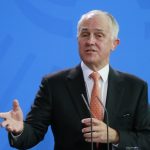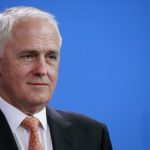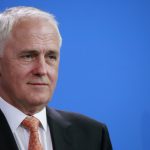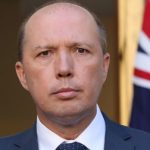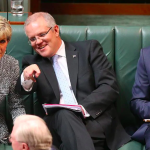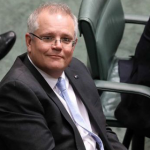There’s a Deafening Silence on the Current ‘Debt and Deficit Crisis’
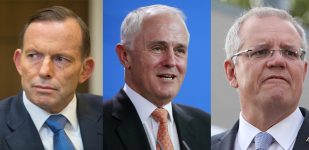
When Coalition leader Tony Abbott took on the Rudd government in the September 2013 federal election, he whipped up a storm about what he saw as the atrocious state of the economy under Labor, signified by astronomical government debt – which was sitting at $273 billion at the time.
Dubbed the ‘debt and deficit crisis’, Abbott promised to reduce government spending, lower deficits and, at some stage, start paying off the debt. But close to two years later, the nation under Abbott had managed to add a further $100 billion to the debt: a 35 percent increase.
As we stare down the barrel of another federal election this May, it might be noted that the government debt that Abbott was harping on about actually passed the half a trillion mark under then treasurer Scott Morrison’s watch in June 2017. Currently, it’s over $685 billion.
This means that over the Abbott/Turnbull/Morrison government’s time in power, the gross government debt has more than doubled, rising by a whopping 150 percent over a period of close to 66 months.
Economists say Abbott’s focus on gross national debt at the time of the last change of government was misguided. And while the Coalition has certainly revealed its inability to lower debt, there’s more to the equation.
Changing the focus
UNSW Economics Professor Richard Holden explains that net debt rather than gross debt is the important measure. “Net is important because gross debt should be offset by assets held by Australia”, he told Sydney Criminal Lawyers.
Deficits occur when the government falls short of its expenses and needs to borrow money to cover them. These deficits accumulate to make up the overall debt. In September 2013, the national deficit was close to 23 million, while last month it was almost to $22 million.
The gross government debt represents the value of all Commonwealth government securities, which have been issued to investors when the federal government needs to borrow money so it can cover its costs.
Net debt is calculated by subtracting from the gross debt the money that the government is owed, along with certain financial assets that it can sell to meet its financial obligations. If net debt is rising, the deficit is increasing faster than the value of the financial assets.
Not all government assets are considered in the net government debt equation. Funds held in the Australian Government Future Fund – which is a fund for the government to pay the superannuation of retired civil servants – and the Reserve Bank do not factor into this calculation.
Doubled under the Liberal Nationals
Labor shadow minister for finance Jim Chalmers said on Q&A in July last year that the Australian public doesn’t hear enough about the net debt doubling under the Coalition’s watch. Indeed, it certainly has.
Net debt was over $174 billion at the time of the 2013 federal election. In July last year, it was over $374 billion. It dipped slightly last month to a little over $373 billion.
At the time, a spokesperson for Chalmers told the Conversation that “the Liberals used to bang on about a so-called ‘budget emergency’ and a ‘debt and deficit disaster’, but you don’t hear a peep from them anymore”.
As a percentage of GDP
Although, Professor Holden asserted that the correct measure to use in gauging the increase in government debt is net debt as a percentage of GDP. “Thinking of it relative to GDP is important because the size of the economy dictates our ability to service the debt,” he explained.
GDP – or gross domestic product – is the total value of goods produced and services provided in a country over a year. And net debt should be compared GDP, as while the debt has grown, so too, has the economy. In 2017, the nation’s GDP sat at $1.69 trillion.
It too has increased
Back in the financial year 2010-11, under the Gillard government, the net debt was just 6.4 percent of GDP. And in Labor’s final full year in power, 2012-13, the net debt was 10.4 percent of gross domestic product.
At the end of the first financial year when the Abbott government took control, net debt to GDP had risen to 13.4 percent. In 2014-15, the figure jumped to 15.2 percent. And over the last financial year, the net debt rose to 18.6 percent of GDP.
So, since June 2014, the percentage of GDP the net debt is has grown by almost 39 percent. And it’s plain to see that what the Coalition offered when it came to power is nowhere near what they delivered over the last five years.
It’s not all doom and gloom
According to Professor Holden, the net debt to GDP figure is “still at a low level by historical and international standards”. This is revealed when it’s compared to the net debt to GDP figures of other OECD nations.
In 2017, Australia’s net debt was a little over 18 percent of GDP, while in Canada it was 27.7 percent, in the United Kingdom it was 78.1, in France the percentage was 87.6, while in Japan it came in at 153 percent. And Australia’s net debt to GDP is expected to decline over the coming years.
It’s time
And while Monash University Professor Mark Crosby has put forth that “economic outcomes have had little to do with which party is in power”, it might be wiser to look at more than just monetary concerns when taking to the ballot box in May.
These factors could include the continued detention of refugees in inhumane conditions on foreign shores, a refusal to accept that fossil fuels are no longer a viable option, and the mismanagement of vital waterways.



